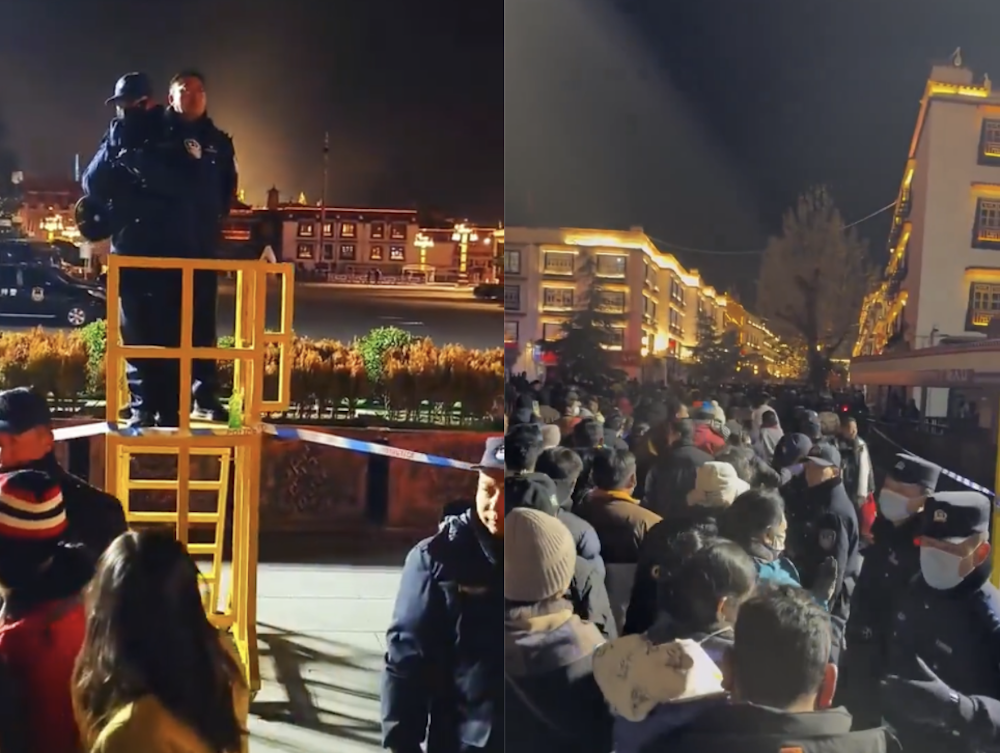Tenzin Nyidon
DHARAMSHALA, May 21: In a new report, the Washington-based advocacy group International Campaign for Tibet (ICT) has spotlighted China’s deepening legitimacy crisis in governing Tibet, citing the regime’s failure to cultivate credible Tibetan leaders who can both serve the Chinese Communist Party (CCP) and earn the trust of the Tibetan people.
The report highlighted a stark contrast between historical Tibetan figures—such as Baba Phuntsok Wangyal, Ngabo Ngawang Jigme, and the 10th Panchen Lama—who retained a degree of commitment to the Tibetan cause, and today’s crop of Tibetan officials, whose careers are shaped more by political loyalty to Chinese President Xi Jinping than by competence or popular legitimacy. Recent policies and training programs in the so-called Tibet Autonomous Region (TAR) heavily emphasize ideological indoctrination and allegiance to the CCP, prioritizing control and “stability” over genuine representation.
ICT’s report maps the current leadership structure across 17 prefectural-level and two county-level areas within China’s Tibetan autonomous regions. Among the notable shifts, Yan Jinhai has replaced Lobsang Gyaltsen as head of the TAR People’s Congress, while Karma Tseten—an official from Jomda County with a background in security roles in the politically sensitive region of Nagchu—now heads the TAR government. Despite these changes, neither Karma, Yan, nor other top Tibetan officials have managed to garner the trust of the Tibetan public.
A significant indicator of Beijing’s failure is its continued marginalization of Tibetans in top-tier leadership positions. While 85-year-old Phakpalha Gelek Namgyal still holds senior roles in the TAR, no Tibetan occupies top posts in key Tibetan areas of Gansu, Qinghai, Sichuan, and Yunnan, provinces that host the majority of the Tibetan population. Moreover, the report details how non-Tibetans overwhelmingly dominate the CCP’s powerful party apparatus in Tibetan regions. No Tibetan has ever served as Party Secretary at the provincial level, and only four of the 17 prefectures have Tibetan Party Secretaries. While many government heads are Tibetan, overall representation remains below what is mandated by China’s own Regional Ethnic Autonomy Law.
The ICT report further outlined the CCP’s growing reliance on religious figures, especially Tibetan Buddhist lamas and monks, to project legitimacy, despite simultaneously condemning the monastic tradition as “feudal theocracy.” Over 20 officially recognized reincarnate lamas have been placed in leadership roles, often under the control of the state-run Buddhist Association of China. This paradoxical strategy underscores the enduring influence of Tibetan Buddhism and China’s attempt to harness religious authority to bolster its rule, particularly concerning succession plans for the Dalai Lama.
One example is the CCP-appointed Panchen Lama, Gyaltsen Norbu, who has seen a notable decline in influence. Once paraded at major political and religious events, he now plays a diminished role, with his visibility in Chinese state media waning and his influence among Tibetans virtually nonexistent. Despite initial heavy promotion, Norbu has failed to win over the Tibetan public, limiting his utility as a political tool for the CCP.
Corruption also looms large in the governance of Tibetan areas. The report highlighted the increasing number of Tibetan officials who have been investigated, prosecuted, or sentenced for corruption in 2024, many of them former high-ranking leaders. ICT noted that such patterns reflect both widespread graft and the potential use of anti-corruption campaigns as instruments of political control in an opaque and repressive system. The ongoing investigations signal that past warnings, including Hu Yaobang’s 1980 critique and a 2014 party inspection, have not translated into meaningful reform.
The judiciary, too, is portrayed as an arm of Party control rather than a system of justice. While some Tibetans hold positions in courts and procuratorates, their authority is strictly subordinate to the CCP. The Party’s Political and Legal Affairs Commission exercises overarching control, turning the legal system into a tool of “rule by law,”a façade of legality masking authoritarian rule. A few Tibetan officials have risen to prominence outside traditional Tibetan regions, suggesting a limited path for career advancement within the rigid confines of the Party-state structure.
The ICT report concluded that China’s governance in Tibet is characterized by systemic mistrust, ethnic marginalization, and a lack of genuine representation. The continued absence of Tibetan voices in key decision-making roles, especially in security and party leadership, reflects Beijing’s fear of empowering Tibetans and emphasises the persistent instability in its rule over the region.










